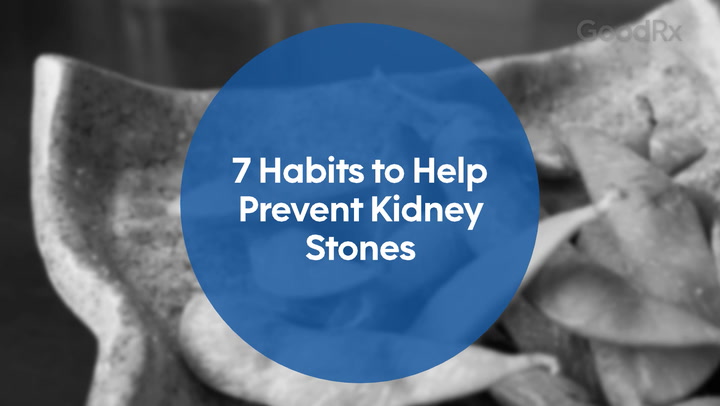5 Examples of a Balanced Diet, From a Dietitian
Key takeaways:
Following a balanced diet helps reduce the risk of developing many chronic health conditions including heart disease, Type 2 diabetes, and dementia, as well as some types of cancer.
There are a variety of healthy eating patterns that can fit the definition of a balanced diet while catering to your unique health needs, cultural preferences, and convenience.
There is no one-size-fits-all when it comes to a balanced diet. But there are basic principles and guidelines that are recommended to help you get the nutrients you need to lead a healthy life.
Table of contents
A healthy, balanced diet is essential for nearly all aspects of our health and wellbeing. It provides us with all the important nutrients we need for healthy day-to-day functioning and to protect us from chronic health problems.
A balanced diet doesn’t have to look the same from one person to the next. There are a variety of eating styles that factor in individual health needs and preferences. But there are some core principles of well-rounded diets.
What does a balanced diet mean?
While there isn’t a standard definition of a balanced diet, you generally eat a variety of healthy foods in proper portions to prevent health risks.
According to Christina Iaboni, a registered dietitian from Toronto, Canada, following a healthy, balanced diet means enjoying all foods with a focus on colorful fruits and vegetables, lean proteins, and whole grains.
And while the exact components will vary depending on personal health needs and cultural and personal preference, a balanced diet is one that incorporates a variety of healthy foods without being overly restrictive.
In other words, a balanced diet is an eating pattern that provides you with nutrients you need to stay healthy, including:
Macronutrients, like carbohydrates, protein, and fat
Micronutrients, like vitamins, minerals, and phytochemicals (naturally occurring compounds found in plants)
Read more like this
Explore these related articles, suggested for readers like you.
Examples of a balanced diet
Various health organizations have recommendations for a balanced diet. While there are slight variations in these recommendations, the principles are similar.
Here are five of the most common examples of what a balanced diet can look like.
1. The Dietary Guidelines for Americans
The Dietary Guidelines for Americans (DGA) are developed by the U.S. Departments of Health and Human Services and Agriculture. Every 5 years a select group of nutrition researchers is appointed to review the current research and adjust recommendations as needed.
To help support healthy growth and development and reduce the risk of chronic health issues, the DGA recommends eating a diet rich in:
Fruits
Vegetables
Whole grains
Lean protein
Low-fat dairy options
Healthy oils
They recommend different servings and portions from each of these food groups based on age or calorie needs.
2. MyPlate
MyPlate is a specific form of a balanced diet based on the DGA. It provides a visual and actionable way to put the recommendations into practice.
Using a plate as an illustration, it recommends filling your plate with:
50% fruits and vegetables
25% grains
25% lean protein
A serving of dairy on the side
It also recommends limiting added sugar, salt, and saturated fat (type of fat linked to heart problems) to no more than 15% of the calories you consume in a day. The general limit around saturated fat is less than 10% of your daily calories.
3. Healthy Eating Plate
The Healthy Eating Plate was developed by Harvard University’s T. H. Chan School of Public Health. While similar to MyPlate, they recommend limiting dairy foods to no more than one or two servings a day and drinking water in place of milk and juices.
They also recommend using healthy fats and plant oils and don’t specify a limit around the amount of fat.
4. World Health Organization
A healthy, balanced diet as defined by WHO is one that protects against malnutrition as well as cancer, heart disease, and diabetes, among other health problems.
They encourage following a mostly plant-based eating style with an equal emphasis as DGA on curbing foods high in fat, added sugar, and salt.
5. Diabetes diet or diabetes plate
While the goal of the diabetes diet and diabetes plate method is reducing or stabilizing blood glucose levels, both emphasize a balanced approach to eating.
This diet focuses on:
Complex carbohydrates (like whole grains) that take longer to digest rather than simple carbohydrates
Non-starchy vegetables that are higher in fiber
Lean protein
Healthy fats
In addition to helping support blood sugar control, this eating plan can also help reduce the risk of heart disease.
Others examples of balanced diets
There are many other balanced eating patterns that promote health, including:
MIND diet (blend of Mediterranean and DASH diets, focused on boosting brain health)
While there is a higher likelihood of missing important nutrients if you are vegetarian or vegan, it is possible for these ways of eating to be balanced, too — as long as you make sure your diet is supplying you with the vitamins and minerals you need and you’re supplementing as needed under the guidance of a healthcare provider or dietitian.
How much should you aim to eat from each food group?
The amounts or portion sizes below (which are based on the DGA) will vary according to each person’s needs. But in general, this is a good guide to follow for what to eat daily.
Food group | Daily |
Fruit | 2 cups |
2 to 3 cups | |
Grains | 6 oz (around ¾ cup), of which at least 3 oz should come from whole grains |
Lean protein | 5.5 oz (around ⅔ cup) |
Dairy | 3 cups |
Fat and oils | 27 g (around 2 tbsp) |
List of healthy foods for a balanced diet
Choosing a diverse array of foods from each major food group daily will help you get a variety of nutrients. Fresh, frozen, and canned foods all provide a variety of nutrients and can fit into a healthy balanced diet.
When choosing frozen or canned foods, look for varieties without added sugar or salt or those that have less sodium and sugar.
Apples
Applesauce (no sugar added)
Apricots
Bananas
Blackberries
Blueberries
Cherries
Citrus fruits, like lemon and lime, grapefruit, or orange
Kiwi fruit
Mango
Nectarines and peaches
Papaya
Pears
Pineapple
Raspberries
Strawberries
Asparagus
Carrots
Cruciferous vegetables, like cauliflower, broccoli, and cabbage or bok choy
Cucumber
Eggplant
Leafy greens, like spinach, kale, and collard or mustard greens
Kohlrabi
Peas
Peppers
Starchy vegetables, like potatoes, sweet potatoes, corn
Tomatoes
Ancient grains, like quinoa, spelt, and amaranth
Barley
Cereals, including oats
Pasta
Popcorn
Rice, like brown, white, or wild
Whole grain bread
Whole grain crackers
Chickpeas
Lean beef
Legumes, including black beans, kidney beans, and pinto beans
Lentils
Nuts, like walnuts, almonds, and pistachios (including nut butter)
Poultry
Seafood, including fish and shellfish
Seeds, like flax, chia, and hemp seeds
Soy and other plant-based protein
Cheese
Milk and plant-based milk, including soy, almond, or oat milk
Yogurt and kefir
Avocado
Avocado oil
Canola oil
Coconut oil
Ghee
Grapeseed oil
Olive oil
Sesame oil
Sunflower oil
*Note this is not an exhaustive list of foods that can fit into a healthy eating pattern.
Foods to limit in a balanced diet
Be sure to limit alcohol, many artificial chemicals and flavors, and ultra-processed foods, which are high in sugar, salt, and saturated fat. Some examples include:
Candy
Foods that are high in sodium, including cured meats and salty snacks
Fried foods, including chips and french fries
Refined carbohydrates, including pastries, cakes, and cookies
Soda and other sugary beverages
What are the benefits of a well-balanced diet?
The health benefits of eating a balanced diet are wide-ranging and include:
A lower risk of health problems, like heart disease, Type 2 diabetes, and certain cancers
Strong bones, as well as healthy growth and development in children
Higher energy levels
Controlled weight
Healthy pregnancy and breastfeeding support
An immunity boost
Improved gut health
How to make a balanced meal plan that works for you
To get the most benefit from a balanced diet, you need to find a plan that fits into your lifestyle and that you can stick with. Here are five tips to help you get started:
Start by talking with your healthcare provider. They can help you understand your unique health needs.
Consider working with a registered dietitian. They can help you determine which foods you need and the amounts and portions that are right for you, while taking your personal and cultural preferences into account.
Try to include foods from each group at every meal. Getting in the practice of balancing each meal (or snack) can help you build a balanced diet. The plate method is an easy way to visualize this. Divide your plate into quarters and fill half with fruits and vegetables, a quarter with grains, and a quarter with protein.
Write out a meal plan and shopping list each week. Planning ahead will help ensure you have healthy food available to make balanced meals.
Make sure you include foods you like and are comfortable preparing.
Does eating less healthy food every now and then throw off a balanced diet?
No. According to dietitian Miranda Galati, RD, “Food is more than the nutrients it provides. It's a celebration, joy, culture, history, and bonding, too.”
Prioritizing nutrient-dense foods most of the time allows you to include your fun favorites without guilt when the time calls. This makes eating in a healthy way easier to stick with and sustain.
While a small piece of chocolate after dinner or enjoying a hot dog at a baseball game is fine, it’s important to be mindful of how many — and how often — you’re having them. Eating less healthy foods too frequently can also add up.
The bottom line
Apart from providing you with the energy to go about your day, following a balanced, healthy diet helps promote better long-term health all around. Including a variety of nutritious foods from different food groups can help you ensure you’re meeting your nutrient goals.
In order to make following a balanced diet sustainable, prioritize healthy foods that you like and can integrate into your diet easily, while also making room for treats once in a while.
Why trust our experts?



References
Centers for Disease Control and Prevention. (2021). Benefits of healthy eating.
The Nutrition Source. (2023). Healthy eating plate. Harvard T. H. Chan School of Public Health.
U.S. Department of Agriculture. (2020). Dietary guidelines for Americans, 2020-2025.
Wastyk, H. C., et al. (2022). Gut microbiota-targeted diets modulate human immune status. Cell.
World Health Organization. (2020). Healthy diet.





























